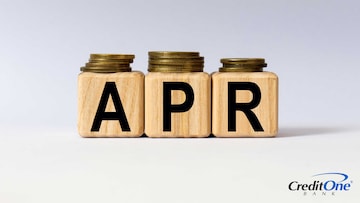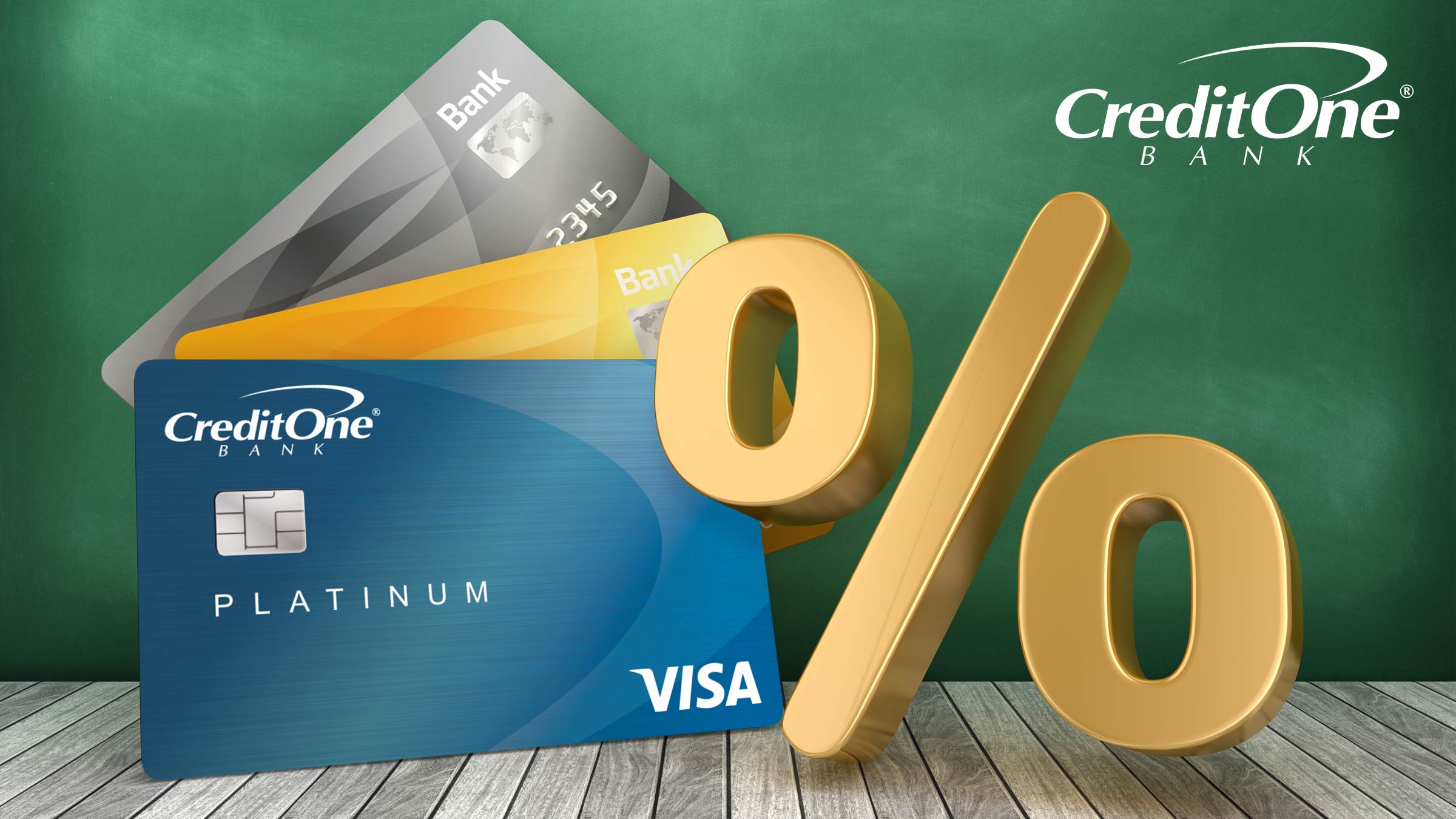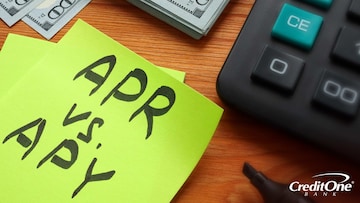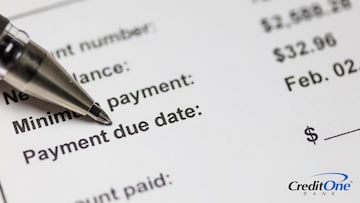
How Do Credit Card Interest Rates Work?
August 26, 2025
Most of us like interest when earning it, but not when paying it. Some strategic financial moves will help you minimize or avoid these charges.

In this article:
- Introduction
- What Is Credit Card Interest, and Why Does It Matter?
- When Is Credit Card Interest Charged?
- Types of Credit Card Interest Rates
- What Determines Your Credit Card Interest Rate?
- What Is APR and How Is It Calculated?
- How To Calculate Credit Card Interest
- How Does Credit Card Interest Affect Your Payments Over Time?
- How To Pay Less in Credit Card Interest
- Tools To Help You Manage or Avoid Interest
- Frequently Asked Questions (FAQ)
- Bottom Line
Introduction
Having and using a credit card is more than just about charging things and then paying for them. A lot of factors impact what you actually pay for each item, and those factors include interest.
Of course, “interest” doesn’t refer to how interested you are in doing math. But if you like math, this whole concept does become a lot easier.
What Is Credit Card Interest, and Why Does It Matter?
Credit card interest is a percentage you pay on the balance you carry. It’s basically the cost of borrowing money … so you pay a fee in exchange for getting credit today, rather than having to use your own funds from your pocket.
This interest charge is usually stated as an annual percentage rate (APR). Your APR might change based on economic conditions. It also could vary based on when you make the purchase, what type of transaction it is, or what promotions you qualify for.
When Is Credit Card Interest Charged?
Credit card interest is usually charged on the last day of your billing cycle, which is officially known as the “statement closing date.” This is not the same as your payment due date, and in fact most often lands 21 to 24 days before your due date.
That means if you make a purchase in the first week after your previous due date, your new interest might be calculated on the higher balance. And, consequently, if you make a payment during that window, you could have a lower interest charge that month.
The period between your statement closing date and payment due date is often considered a grace period. If you pay your full balance during your grace period, and you have not previously been carrying a balance, you may not be charged interest at all.
Types of Credit Card Interest Rates
Interest rates come in a few different flavors and may or may not be tied to different activities. These terms can apply to both loans and credit cards:
- Variable
- Fixed
- Introductory
- Promotional
Variable interest rate
Variable interest rates, also known as adjustable or floating rates, change over time. They rise or fall based on a benchmark “index rate,” which moves with the market’s economic conditions.
Often this index is the country’s prime rate, which is based on a number set by the government. In the US, the Federal Reserve (a.k.a. the Fed, our central bank) sets the federal funds rate, which banks use to lend money to each other. The prime interest rate is that base federal funds rate plus a specific percentage, which is usually 3%.
Most variable interest rates will be a specific percentage again above that prime rate, so you’ll hear the term “prime plus rate.” For example, if the Fed sets its federal funds rate at 4.5%, the country’s prime interest rate will be 7.5% (4.5 + 3). And your specific APR, based on your credit score, will be prime plus x.
Fixed interest rate
Fixed interest rates are less common with credit cards than variable. However, if you do have a fixed interest rate, it means it doesn’t change with market conditions — it is what it is and will always be that amount, unless the lender or creditor tells you it’s changing for whatever reason.
Introductory interest rate
New cardholder offers sometimes include a special time-limited introductory interest rate. It’s not uncommon to see a 0% introductory APR that remains in effect for, let’s say, the first six months or a year. During that time, the purchases you make with your credit card will be interest-free.
Promotional interest rate
Promotional interest rates are just like introductory APRs, except they’re not just tied to a new credit card. Promotional rates can happen with limited-time balance transfer offers, holiday seasons, or any other time a credit card company wants to reward your spending behavior by offering a lower rate than normal.
Other APRs you might come across include cash advance APRs, regular balance transfer APRs, and penalty APRs. These only kick in if you do specific things with your credit card — like taking a cash advance, transferring a balance from another card, or missing payments.
Here’s a breakdown of how the various types of interest rates compare:
| Interest type | Rate changes | Rate level |
| Fixed | Only with disclosure | Often the highest |
| Variable | With economy | May start lower |
| Introductory | After intro period | Generally low |
| Promotional | After promo period | Generally low |
| Cash advance | On a cash advance | May be higher than standard APR |
| Balance transfer | On a balance transfer | May be lower than standard APR |
| Penalty | After missing payments or going over the limit | Usually higher than standard APR |
What Determines Your Credit Card Interest Rate?
Besides possibly being tied to the country’s prime rate, several factors can influence your credit card interest rate.
- Your credit score
- Your credit history
- Other personal data
If you have a higher credit score, chances are you’ll have a lower interest rate, and vice versa. Also, if you have a solid history of being responsible with credit, and making on-time payments, you’ll usually be offered a lower APR.
Other personal data, like how many other credit cards you have, what other types of credit you have, and how much you make, might also play a role in the bank’s determination of your interest rate.
What Is APR and How Is It Calculated?
Simply put, an APR is the yearly interest you pay on a borrowed balance. People often use “interest rate” and “APR” interchangeably, and in the case of credit cards, they usually are the same.
A loan APR may include additional fees, like origination fees, administration fees, and loan processing fees. However, with credit cards, your fees aren’t usually included in the APR. They’re extra. We’re talking annual fees, late fees, cash advance fees, and any other fees that apply to your usage of that card.
Another thing that’s extra is compound interest — which means paying interest on the previous interest. The APR doesn’t account for that, so the amount of interest you end up paying largely depends on the balance you’re carrying.
To calculate the interest you’ll actually pay on your credit card, we need to start with the APR stated in the terms and conditions. You also need to know whether your standard APR is fixed or variable, and which calculation method the issuer uses.
If you’re working with different APRs — one for purchases, one for cash advances, one for balance transfers, and one or more promotional APRs — you’ll need to factor those in as well. You also may encounter a penalty APR if you’ve gone over your limit or missed a few payments.
So the math is often pretty complicated. But for the sake of simplicity, let’s choose some round numbers to illustrate the concept of how an APR is calculated.
If your APR is 24%, that means you’re paying 24% over the entire year. If we want to see your monthly APR, which affects your current statement, we need to divide the annual rate by 12.
24% ÷ 12 = 2%
So you’re paying 2% interest per month in this example. And if you carry a balance of $1,000 with that 24% APR, you’ll pay $20 in interest for that month (2% of $1,000).
How To Calculate Credit Card Interest
Figuring out your monthly interest rate is the first step. But the interest charges on your credit card might be based on your average daily balance, or your adjusted balance at the end of your monthly billing cycle. This is explained in your card’s terms and conditions.
Average daily balance method
This method tracks your balance daily, with new charges added and payments subtracted as you go. At the end of your billing cycle, each daily balance is added up and then divided by 30.
Adjusted balance method
This method starts with the balance from the end of the previous billing cycle, and all payments you make during the new billing period get subtracted from that balance. You have a grace period until the end of the current billing cycle before new charges start accruing interest.
Step-by-step interest calculation
Average daily balance is the method most commonly used by credit card issuers. It’s also the simplest to work with, so let’s figure out your monthly interest charges based on that.
To reiterate, your monthly interest is calculated by dividing your APR into 12 parts. Now, to calculate your monthly interest, we need to multiply that monthly rate by your average daily balance.
Monthly interest formula:
APR ÷ 12 × average daily balance
For this example, we’ll stick with the 24% APR, which is 2% per month, or .02. And let’s say you start the month with a balance of $1,000, buy a $500 item on day 10 and make a $100 payment on day 20.
If the month has 30 days, that’s nine days with a $1,000 balance, 10 days with a $1,500 balance, and 11 days with a $1,400 balance.
(9 x $1,000) + (10 x $1,500) + (11 x $1,400)
= $9,000 + $15,000 + $15,400 = $39,400
So we divide $39,400 by 30 days and get an average daily balance of $1,313.33. And 2% of that is $26.27.
0.24 ÷ 12 = 0.02 x $1,313.33 = $26.27
So if your entire balance is at the 24% APR level, you’ll pay $26.27 in interest that month.
How Does Credit Card Interest Affect Your Payments Over Time?
Looking at simple round figures to illustrate a point is one thing. But in reality, your interest charges add up, compound, and can snowball over time.
Your credit card account includes a minimum monthly payment, which is all you need to pay if you want to stay current and avoid late fees — assuming you’re paying that minimum before your due date. However, you’ll most likely be paying interest charges if you don’t pay off the full balance.
Let’s say you’re carrying a $2,000 balance with a 24% APR (or 2% per month). And let’s say your minimum payment due is always 1.5% of your balance, rounded up to the nearest dollar.
Here’s how your interest could accumulate over one year if you only make the minimum payments on your due date each month.
| Month | Opening balance | APR | Interest charge | Minimum payment | Ending balance |
| 1 | $2,000.00 | 24% | $40.00 | $30.00 | $2,010.00 |
| 2 | $2,010.00 | 24% | $40.20 | $31.00 | $2,019.20 |
| 3 | $2,019.20 | 24% | $40.38 | $31.00 | $2,028.58 |
| 4 | $2,028.58 | 24% | $40.57 | $31.00 | $2,038.15 |
| 5 | $2,038.15 | 24% | $40.76 | $31.00 | $2,047.91 |
| 6 | $2,047.91 | 24% | $40.96 | $31.00 | $2,057.87 |
| 7 | $2,057.87 | 24% | $41.16 | $31.00 | $2,068.03 |
| 8 | $2,068.03 | 24% | $41.36 | $32.00 | $2,077.39 |
| 9 | $2,077.39 | 24% | $41.55 | $32.00 | $2,086.94 |
| 10 | $2,086.94 | 24% | $41.74 | $32.00 | $2,096.68 |
| 11 | $2,096.68 | 24% | $41.93 | $32.00 | $2,106.61 |
| 12 | $2,106.61 | 24% | $42.13 | $32.00 | $2,116.74 |
| Totals | $492.74 | $376.00 | +$116.74 |
By the end of the year, you’ve accumulated $492.74 in interest charges but only paid $376.00 towards your balance. So despite keeping your account current, you end up owing $116.74 more than where you started.
How To Pay Less in Credit Card Interest
As you can see, interest adds up quickly if you’re only paying your minimum due. So the best way to avoid interest charges is to pay off your credit card balance in full each and every month — and early enough in the month so the interest doesn’t calculate.
Since your interest charge is usually calculated on the statement closing date, paying as much as you can before that date means there’s less to calculate interest on. So you pay less.
As a bonus, the outstanding balance on that date is also what gets reported to credit bureaus. So sending in your money a few weeks early means you not only pay less interest, but if that payment gets reported, you could end up with a better credit report — and eventually a better credit score as a result.
Of course, the scenario changes if you’re on one of the no-interest promotions mentioned earlier. In that case, you need to pay off the item before the end of the promotional term in order to get the 0% interest.
Tools To Help You Manage or Avoid Interest
Interest can seem like that big, scary monster you thought was living under your bed as a child. You can’t see it, but you know it’s growing bigger as it lurks in the shadows, and you worry about it getting out of control.
Luckily, you can use some handy tools and resources to manage your finances and limit the interest you pay.
- Online credit card interest calculators like Calculator.net will give you helpful data, including how long it will take to pay off a balance or how much you need to pay if you’re working towards a specific date.
- Alerts and notifications from your banking or credit card app can automatically let you know of any suspicious activity, issues with your balance, or upcoming due dates.
- AutoPay setup through your credit card app can prevent late payments while eliminating the need to keep track of due dates.
- Credit card statements provide transparent documentation about what you owe and what you’re being charged, and you can also check for APR changes or other official notices.
Frequently Asked Questions (FAQ)
The following answers address some common questions about credit card interest.
Is credit card interest charged daily?
Credit card issuers can choose how to charge and calculate their APR as long as they disclose it in the card’s terms and conditions. Some issuers calculate interest using the average daily balance method, which considers your balance on each day. Others use the adjusted balance method, which is more like a monthly snapshot.
Can I avoid interest if I pay just the minimum?
No. If you only pay the minimum amount due, you’re carrying a balance of whatever’s left on your account. Unless you have a promotional 0% APR, you’ll be charged interest on that outstanding balance.
What is a good APR for a credit card?
0% is the best APR, but it doesn’t usually last forever. On an ongoing basis, anything below 20% would be considered a good APR for a credit card.
Does APR affect my credit score?
Your APR doesn’t directly affect your credit score. However, if you let the interest charges snowball out of control, you could end up increasing your credit utilization ratio, maxing out your cards, or being unable to make your minimum payments — all of which could negatively impact your credit score.
Bottom Line
Credit card interest is what you pay as a privilege to access money to spend. However, you can limit how much you’re charged by paying off your balances as early as possible — which will also help your credit score rise. And that, in turn, will likely earn you lower interest rates and higher credit limits in the future.
If you’re shopping around for a new card and comparing interest rates, see if you pre-qualify first. This lets you evaluate the offers you qualify for without affecting your credit score.



